Belinda Read online
Page 19
“I can handle that. I can handle what’s happening to my life. What I can’t handle is not knowing whether or not you can handle what’s happening to you! I have no right—”
“No right!” She came closer, and I thought this time she would hit me, she was so furious. Her face was positively scarlet. “Who says you have no right! I gave you the right, goddamn it, what do you think I am!”
I couldn’t endure it, the expression on her face, the pure malice.
“A child. A legal child. That’s what you are.”
She made some low sound as if she was going to scream. She shook her head.
“Get out of here,” she whispered. “Get away from me, get away, get away!” She started shoving me, but I wouldn’t go. I grabbed her wrists, and then I pulled her close to me and put my arms around her. She was kicking me, digging the toe of her shoe into my shin, stomping the heel into my foot.
“Let me go,” she was growling. And then she did get her hand loose, and she slapped me hard over and over, hard stinging slaps that must have hurt her hand.
I pushed my face into her neck. My ears were ringing. Her hair was scratching me. Her hands were pulling at me. I just held her.
“Belinda,” I said. “Belinda.” I kept saying it until she stopped struggling.
And finally her body relaxed. The heat of her breasts was right against my chest.
The tears had made the mascara run down her cheeks in black streaks. She was trying to hold in her sobs.
“Jeremy ...” she said, and her voice was small and fragile. It was positively pleading. “I love you,” she said. “I really do. I love you. I want it to be forever. Why isn’t that enough for you?”
Two o’clock. Must have been. I hadn’t been looking at the clock however. I had been sitting at the kitchen table smoking her clove cigarettes. Sober by then, probably. Headache, that I remember. Bad headache. My throat had been sore.
Why had I looked at the damn films? Why had I called Dan? Why had I talked to Alex? Why hadn’t I left it alone, done what I’d promised I would do?
And if I told her everything now, confessed the snooping, the prying, the investigation, what would she do? Oh God, to think of losing her, to think of her struggling to get away from me, to think of her going out the door.
And what about the other pieces of the puzzle? The damned Swiss school scam and the jackpot question, yes, why, why did she leave all that? She had come downstairs in her nightgown. Not Charlotte’s anymore, just hers. And she had sat down near me and reached out and touched my hand.
“I’m sorry, darling,” I had said. “I’m sorry, I’m sorry, I’m sorry.”
But you still won’t tell me, will you? Not one fucking word about any of it. Bonnie, Susan Jeremiah, Final Score. And I can’t look you in the eye.
Her hair had been loose and like foam over her shoulders in the light of the overhead lamp, all clean and sweet from the shower.
“Jeremy,” she had said. “Listen to me. What if we were to go away, you know, really far away?” No answer.
“Like what if we were to go to Europe, Jeremy? Maybe some place in Italy. Some place in the south of France.”
“And you wanted so much to be in America,” I whispered.
“I can wait for America, Jeremy. If we were in Europe, you wouldn’t be worried about detectives or cops or whatever the hell it is you keep worrying about. We’d be safe and you could paint and we could just be alone.”
“Darling, can’t you just tell me who you are?”
“I’m me, Jeremy. I’m Belinda.”
Our eyes had met and the heat had threatened, the awful, torturous heat of the fight again, and I had gathered her to me. No more of that. No, no more.
She had allowed the kisses. She had allowed the tenderness and even yielded to it for a moment.
But then she’d backed off. She had stood looking down at me, and her eyes had an icy ageless expression that had nothing to do with her tears.
“Jeremy, I am telling you now for the last time, make your decision. If you ask me one more time about the past, I will walk out the front door and you will never see me again.”
Six o’clock. Downtown.
Taxis in front of the Saint Francis. No cable cars sliding down the track. And why are you so angry with her? Why do you stomp up Powell Street away from her as if she had done something to you? The first moment you ever saw her you knew she was no ordinary kid. You knew it. And that is why you love her. Nobody had to point that out.
And never, never has she lied about any of it! Not like you’ve lied, about Dan and about snooping in her room and watching her fucking videotapes. Her terms were always: Do not ask me about it. And you accepted them, didn’t you?
And you know damn good and well you wouldn’t have missed it for the world.
But everything is coming apart. That’s the bottom line right now. You can not continue until you resolve it. Make your decision, that is what she said.
I WENT up the steps of the Saint Francis, through the dark heavy revolving door into the gilded silence of the lobby. No night or day here. Enchanted stillness. Image of her the way she had looked standing there by the elevators that day, as coolly elegant as anything around her. Making movies since she was six, maybe even before that. And superstar Bonnie for a mother, imagine.
I went down the long right corridor past the shut-up flower stand, the dress shop windows. Like entering a little underground town, this. What did I want? The magazine store? Books, newspapers? Oh, it was too easy.
There was the paperback bio of the goddess mother right there on the book rack, one of those mass market quickie jobs with no bibliography or index, and enormous print, all the information in it obviously gleaned from other peoples’ interviews and articles. That’s OK. Got to have it. No quibbles about that now.
Yes, grainy little black-and-white photos in the middle.
One, a grinning Bonnie in sunglasses on the terrace of her Greek island home.
Two, famous nude of Bonnie from Playboy of 1965. Yes, exceptional. What genes to be inherited.
Three, the famous picture of Bonnie in glasses and man’s white shirt open down the front, advertising Saint Esprit perfume.
Four, Bonnie nude with dalmatians, by Eric Arlington, the poster that had ended up on a thousand dormitory walls.
Five, Bonnie’s Beverly Hills wedding last year to Marty Moreschi, producer of “Champagne Flight,” and guess who’s there in a high-neck dress with filmy sleeves, looking as lovely as the bride? Belinda.
Six, that picture again of mother and daughter by the de rigueur pool.
All of this right here in just the kind of book she knew that I would never buy. She could have left it lying around the house! She could have read it right in front of me. I would never have even looked over her shoulder.
And oh yes, seven and eight, Bonnie in scenes from “Champagne Flight,” of course, and with whom? Alex Clementine. My old friend.
I got out the three dollars to pay for this invaluable little piece of trash, then checked the magazines. I had seen Bonnie’s face so often in the past year she was damn near invisible. National Enquirer, OK, big juicy cover story: BONNIE SAYS ITALIAN AMERICAN LOVERS ARE BEST. AND I’VE TRIED THEM ALL. Get that too. Can you believe this, you are buying the National Enquirer?
I also bought a toothbrush, a plastic razor, and some shaving cream and went to the front desk and rented the most inexpensive room they could give me. Luggage? “Painters redoing my house, fumes nearly killed me.” Here are all the credit cards known in the Western world. I don’t need luggage!
Just room service breakfast immediately. And a pot of coffee please.
I STRETCHED OUT on the bed and opened the stupid little bio. Just as I thought, lots of facts, quotes, and no attribution anywhere. Publishing houses who issue this sort of thing should be burnt down. But for the moment it gave me exactly what I wanted.
BORN Bonnie Blanchard in Dallas, Texas, in October 1942, Bon
nie had grown up in Highland Park, daughter of a wall-to-do plastic surgeon. Mother died when she was six. Went to live with brother, Daryl, on a ranch outside Denton after her father’s unexpected death. Majored in philosophy at North Texas State.
“Everybody always thought Bonnie was just a big dumb pretty Dallas girl,” said brother, Daryl Blanchard, Dallas lawyer and Bonnie’s financial manager. “Nothing could be further from the truth. She was an A-student at Highland Park High. My sister always had her nose in a book. And she really can’t see without the famous glasses.”
It was the famous Music Department at North Texas State that changed the course of Bonnie’s life.
“Here you have this dry college town,” said her old Highland Park friend Mona Freeman, “I mean, you have to drive thirty miles north or south to buy a can of beer; yet here are these long-haired beatnik jazz musicians from New York City come all the way down here to play with the lab band, they called it, and don’t you know they brought their beatnik poetry and their drugs with them?”
“It was after the lab band had won the award at the Newport Jazz Festival,” said brother, Daryl. “North Texas was very hot. Stan Kenton used to come to recruit musicians for his band. The town was real proud of it. And, of course, Bonnie had never listened to jazz before and suddenly she was wearing black stockings and reading Kierkegaard and bringing home these writer characters and these musicians. Next thing you knew they were all jamming, as they called it, and then everybody was going to France.”
“We were sitting in the Deux Magots when it happened,” said sax player Paul Reisner. “Up comes this gang of Frenchmen carrying all their equipment on their shoulders. And it turns our it’s this guy Andre Flarebeaux and he takes one look at Bonnie and he goes down on one knee and he says in this thick French accent: ‘Brigitte! Marilyn! Aphrodite! I want you in my movie.’”
Sweet Darkness was to make Bonnie the rage of the Paris Nouvelle Vague, along with Jean Seberg and later Jane Fonda.
“They were lined up all around the town square in Denton to see those first two films,” said Mona Freeman. “But, you know, you expect that in your own hometown. It was when we heard about the billboard on Times Square that we knew she had really made it. And then came that sensational ad in Vogue for Midnight Mink.”
“Bonnie really launched the Midnight Mink campaign,” said Blair Sackwell, president of Midnight Mink. “And that first picture launched Eric Arlington’s career as a photographer, whether Eric cares to admit it or not. We were running around frantically trying to decide which coat, and should we show her shoes, and what about her hair and all, and then somebody realized she was taking off all her clothes, and she had put on the full4ength coat, and was letting it hang open all the way down, turned so you couldn’t really see anything, you know, except of course that she was naked, and then she said, ‘What’s wrong with bare feet?’”
“Of course, people reprinted the advertisement everywhere,” said Mona Freeman. “It was news, Bonnie barefoot in white fur. Midnight Mink was just the rage after that.”
Ten films in five years had made her a household word in the United States and Europe. The New York Times, Variety, Time, Newsweek, they all loved her. Finally after the Italian Mater Dolorosa, an American box office smash, Hollywood finally did pay her enough to come home for two big budget all-star disasters.
“Never again,” Bonnie said, going back to France to make Of Love and Sorrow with Flambeaux, the last of her “artistic” films to be released in this country.
In 1976 Bonnie moved with six-year-old daughter Belinda to Spain, venturing out of her lavish suite at the Palace Hotel only to make Continental films for her sometime lover, director Leonardo Gallo.
“Why should a woman marry to have a child? I’ll bring up Belinda to be as independent as I am.”
Gallo’s pictures, though never released in the United States, have made a fortune all over the Continent.
In 1980 Bonnie was hospitalized in London during the filming of a television movie with American star Alex Clementine.
“It was not a suicide attempt. I don’t know how those rumors start. I would never do a thing like that. Never. You don’t have to believe in God to believe in life.”
She made a dozen more international films after that. She worked in England, Spain, Italy, Germany, even Sweden. Horror films, Westerns, costume adventures, murder mysteries. She played everything from a gun-toting saloon keeper to a vampire.
“No matter what you say about the films themselves,” said United Theatricals publicist Liz Harper, “Bonnie was always terrific in them. And remember, even in the worst of times she was getting two hundred thousand to five hundred thousand dollars a picture.”
“It was crazy,” said Trish, Bonnie’s oldest friend and longtime companion. “One time we visited her while she was making this picture in Vienna. We couldn’t even tell what the story was, whether or not Bonnie was supposed to be sympathetic or somebody mean. But she always earned her money. She just did what the director told her.”
After two more mysterious hospitalizations, one in Vienna and one in Rome, Bonnie finally retired for good to her private island paradise, Saint Esprit, which she’d purchased years before from a Greek shipping magi]ate.
“More pictures of me have been taken by the paparazzi off the coast of Saint Esprit in the last two years than in my entire life before that. I wake up and walk out on the terrace and it ends up in an Italian newspaper.”
Bonnie’s former European agent, Marcella Guitron, reported that she would not even look at scripts anymore.
“The quality erotic film she once made with Flarebeaux is now dead. Hard-core porn had seen to that. And the great European directors she worked with were no longer making pictures. Of course, if Polanski or Fellini or Bergman had asked for her, that might have been different.”
“Serious American directors had come into their own by that time,” said New York film critic Rudy Meyer. “Airman, Coppola, Scorsese, Spielberg, and Lucas—those were the ones everybody was talking about.”
“She was smart to quit when she did,” said an actor who had worked with her in Hollywood. “On Saint Esprit she became a mystery with a new market value. That’s when the big picture books on her started to appear in the chain stores all over the country. ‘The Legend of Bonnie,’ you know, all that. Course, she didn’t get a nickel off it, but it kept her famous, especially with the college kids. They had a Bonnie Festival in New Haven and one in Berkeley and one in some little art house in LA.
Saint Esprit: a fifteen-room villa featured in Architectural Digest in 1982, two swimming pools, a private stable, a tennis court, a yacht, and two sail boats. Friends from Texas were flown in regularly for parties, dinners, reunions. Jill Fleming and Trish Cody, old Highland Park classmates, came to live there permanently in 1986.
Jill Fleming:
“You never saw anything like it. There we were in the middle of all that luxury, and Bonnie was just the same Texas girl we’d always known and loved, serving barbecue and beer on the terrace, making everybody feel at home. Her idea of a good time was being with old friends, watching the tube, reading a good book.”
Texas friend Travis Buckner:
“Nothing could get Bonnie off that island. She had a closed system there. Every week Daryl shipped her crates of videotapes, books, magazines. Jill and Trish went to Paris or Rome to get Bonnie’s clothes. The only way the perfume company ever got the endorsement from her was through Daryl. Daryl brought the company to her. Bonnie had her spot on that balcony, and she never moved from it except to go to the bathroom or to bed.”
Trish Cody:
“Bonnie was the commodity and Daryl the brains behind it. No matter how much Bonnie ever made on a picture, half of it went to Daryl, and Daryl invested every penny in Texas land. She even sent half her expense checks back home. It was Daryl who had the foresight to buy the Beverly Hills house back in the sixties before property skyrocketed. Bonnie didn’t want a house in
California. And it was Daryl who rented it out to motion picture people all those years, getting them to foot the bill for the new pool and the new carpet and the new landscaping and the paint jobs, until it was a showcase when Bonnie finally came home.”
Jill Fleming:
“Of course, it was Daryl who was behind the famous dalmatians picture. Eric Arlington could never have gotten Bonnie to pose if Daryl hadn’t flown him in. These people had to go through Daryl.”
Eric Arlington, photographer:
“I hadn’t laid eyes on her since old Midnight Mink days. Frankly I had no idea what to expect. And there she was just lying there on the terrace, as lovely as ever, and these gorgeous black-and-white dogs were there beside her. And she said: ‘Mr. Arlington, I’ll pose for you if I don’t have to move from here.’”
“‘Just take off your clothes, ma cherie, the way you did last time,’ I said to her. ‘And let the dogs come into your arms.’”
Trish Cody:
“Of course, Bonnie just loved those dogs. She didn’t see anything unnatural about letting them crawl all over her. Never occurred to her anybody would find it kinky.”
Daryl:
“The college kids just loved it.”
Eric Arlington:
“She is the most naturally exhibitionistic woman I have ever photographed. She adores the camera. And she trusts it completely. She lay down with the animals, stroking them and crooning to them, letting them lie naturally with her. It was done without the slightest contrivance. I never even asked her to brush her hair.”
Hollywood columnist Lauren Dalton:
“Calling her the dark-haired Marilyn Monroe, that was all wrong. Bonnie was never used in her films as Monroe was used, to play a stupid woman who is unaware of her power over men. On the contrary, Bonnie knew and used her power. It was Rita Hayworth she admired and imitated. The sadness of Monroe has nothing to do with Bonnie and never did.”
New York critic Samuel Davenport:
“When they put that scandalous billboard on Times Square in the sixties, Bonnie admitted that she had given approval. She didn’t play games like the other sex goddesses in those days. When they were filming La Joyeuse, it was Bonnie who let the Playboy photographers onto the set. Even Andr6 Flambeaux was shocked. Bonnie said, ‘We need the publicity, don’t we?

 Interview with the Vampire
Interview with the Vampire Christ the Lord: Out of Egypt
Christ the Lord: Out of Egypt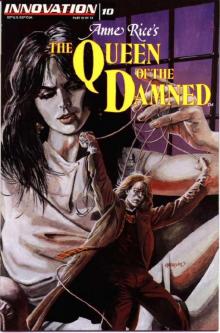 The Queen Of The Damned
The Queen Of The Damned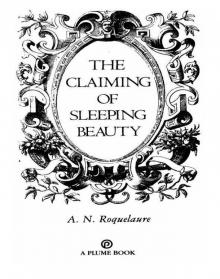 The Claiming of Sleeping Beauty
The Claiming of Sleeping Beauty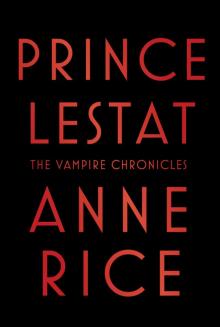 Prince Lestat
Prince Lestat The Master of Rampling Gate
The Master of Rampling Gate The Vampire Lestat
The Vampire Lestat Blood Canticle
Blood Canticle Beauty's Release
Beauty's Release Pandora
Pandora Servant of the Bones
Servant of the Bones Of Love and Evil
Of Love and Evil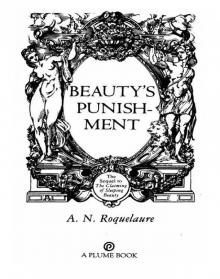 Beauty's Punishment
Beauty's Punishment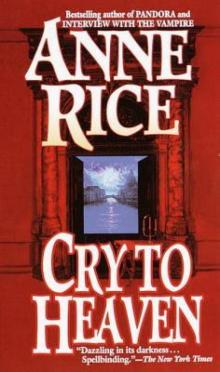 Cry to Heaven
Cry to Heaven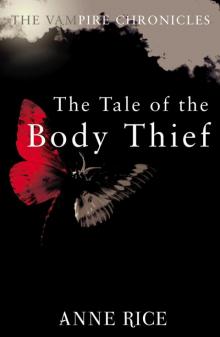 The Tale of the Body Thief
The Tale of the Body Thief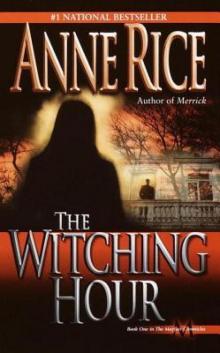 The Witching Hour
The Witching Hour Memnoch the Devil
Memnoch the Devil Blackwood Farm
Blackwood Farm Beauty's Kingdom
Beauty's Kingdom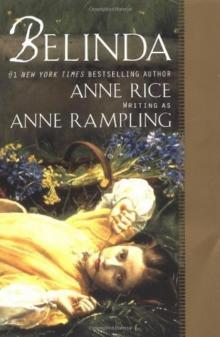 Belinda
Belinda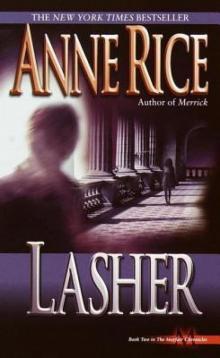 Lasher
Lasher Vittorio, the Vampire
Vittorio, the Vampire Angel Time
Angel Time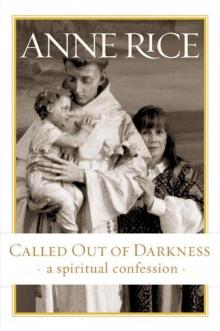 Called Out of Darkness: A Spiritual Confession
Called Out of Darkness: A Spiritual Confession Blood And Gold
Blood And Gold The Passion of Cleopatra
The Passion of Cleopatra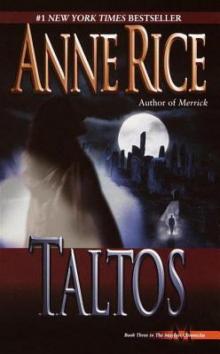 Taltos
Taltos Exit to Eden
Exit to Eden Blood Communion (The Vampire Chronicles #13)
Blood Communion (The Vampire Chronicles #13) The Wolf Gift
The Wolf Gift The Wolves of Midwinter
The Wolves of Midwinter Prince Lestat and the Realms of Atlantis
Prince Lestat and the Realms of Atlantis The Ultimate Undead
The Ultimate Undead The Vampire Lestat tvc-2
The Vampire Lestat tvc-2 The Road to Cana
The Road to Cana Taltos lotmw-3
Taltos lotmw-3 Merrick tvc-7
Merrick tvc-7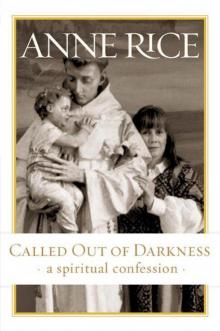 Called Out of Darkness
Called Out of Darkness Pandora - New Vampires 01
Pandora - New Vampires 01 Bllod and Gold
Bllod and Gold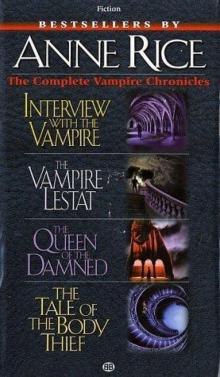 The Queen Of the Damned: Vampire Chronicles
The Queen Of the Damned: Vampire Chronicles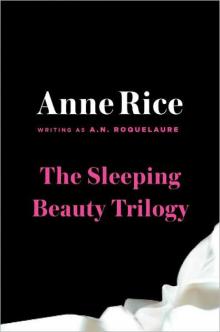 The Sleeping Beauty Trilogy
The Sleeping Beauty Trilogy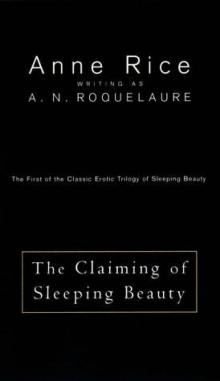 The Claiming of Sleeping Beauty b-1
The Claiming of Sleeping Beauty b-1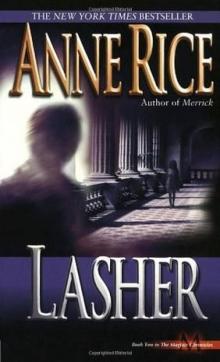 Lasher lotmw-2
Lasher lotmw-2 The Tale of the Body Thief tvc-4
The Tale of the Body Thief tvc-4 The Vampire Chronicles Collection
The Vampire Chronicles Collection Ramses the Damned
Ramses the Damned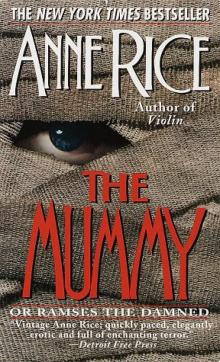 The Mummy - or Ramses the Damned
The Mummy - or Ramses the Damned Vittorio, The Vampire - New Vampires 02
Vittorio, The Vampire - New Vampires 02 The Vampire Armand tvc-6
The Vampire Armand tvc-6 Queen of the Damned tvc-3
Queen of the Damned tvc-3 The witching hour lotmw-1
The witching hour lotmw-1 Feast of All Saints
Feast of All Saints Queen of the Damned
Queen of the Damned The Wolves of Midwinter twgc-2
The Wolves of Midwinter twgc-2 The Mummy
The Mummy Blood and Gold tvc-8
Blood and Gold tvc-8 Blood Communion
Blood Communion Interview with the Vampire tvc-1
Interview with the Vampire tvc-1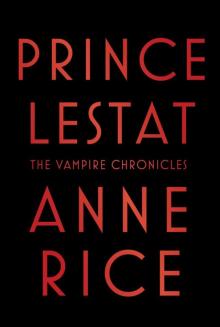 Prince Lestat: The Vampire Chronicles
Prince Lestat: The Vampire Chronicles